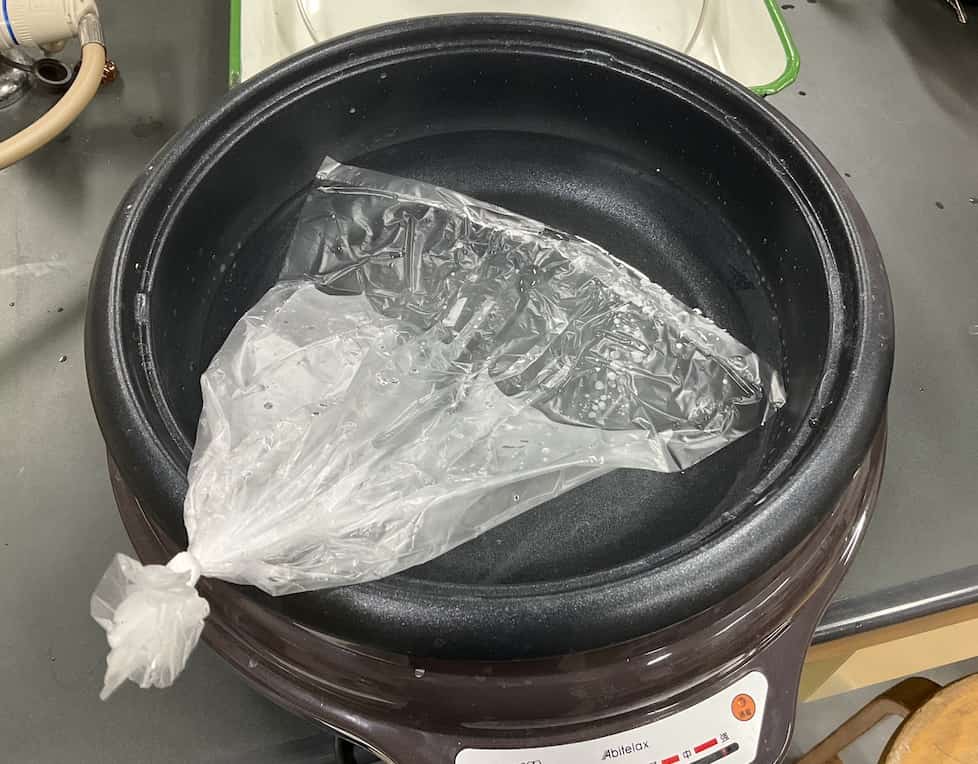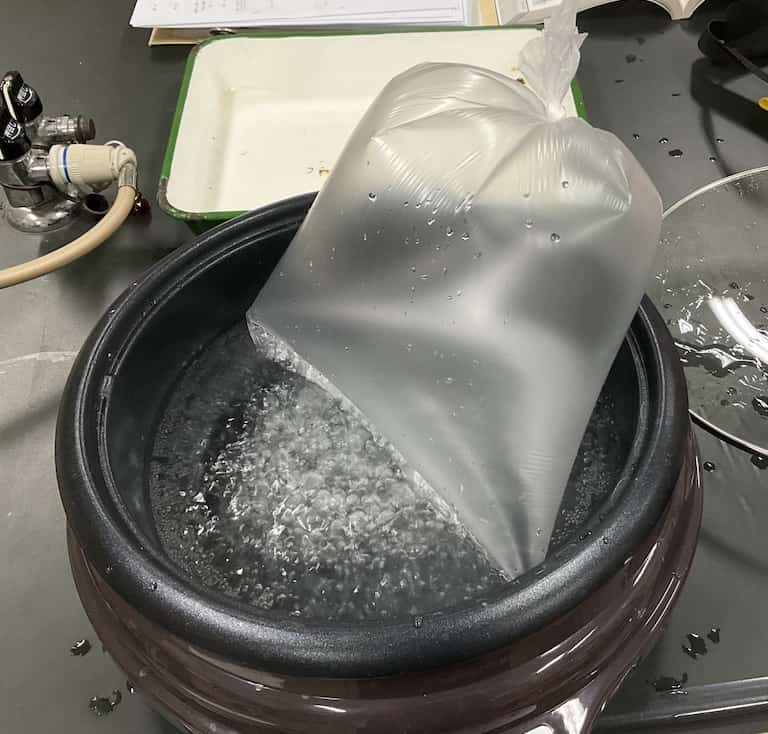Boiling Point Power: The Stunning Science Behind the Self-Inflating Bag
Hi, I’m Ken Kuwako, your Science Trainer. Every day is an experiment!
Have you ever heard of the “Magic Bag”? It’s a mysterious bag that spontaneously inflates when you place it in hot water—without you doing anything else! The truth is, this isn’t magic at all; it’s a display of pure science. The secret, the setup, and the materials are all incredibly simple. Today, I’m going to show you a science experiment you can easily do at home that is guaranteed to have a huge visual impact. Come and experience the astonishing moment a liquid instantly transforms into a gas!
Preparation and Instructions
Everything you need for this experiment is easily found around the house or at a local store.
What you’ll need:
- A polyethylene food storage bag (ziplock bags are the most convenient)
- Anhydrous ethanol (Can be purchased at drugstores or online)
- An electric pot/multicooker (or a portable induction cooktop and a pot)
- Hot water (around 90°C / 194°F)
Instructions:
- Pour only a tiny amount (about 5 ml) of ethanol into the storage bag. Squeeze out the excess air, and seal it tightly.
- Fill the electric pot with water and heat it to 80–90°C (176–194°F).
- Once the water is warm, carefully place the sealed bag containing ethanol into the pot.
- Observe as the bag dramatically inflates right before your eyes!
*Please be extremely careful to avoid burns. Using tongs to place the bag into the hot water is a safer way to handle it.
Watch the Experiment Here!
We used an electric pot this time to prepare the hot water.
① Right After Placing Ethanol in the Bag
The bag remains flat. The ethanol inside is still in its liquid state.

② When Placed into the Hot Water…
The bag swells up in a flash! It’s clear that the ethanol inside has turned into a gas, increasing its volume dramatically.

Why Does It Inflate? The Science of Boiling Points and Volume Change
The key to this entire phenomenon is the boiling point. The boiling point is the specific temperature at which a liquid boils and changes into a gas. We all know that water boils at 100°C (212°F), but ethanol’s boiling point is much lower, sitting at about 78°C (172°F).
This is why, when you place the bag into 90°C (194°F) hot water, the ethanol instantly boils and converts into a gas (ethanol vapor). When a liquid turns into a gas, the tiny particles that make up the substance (molecules) start flying around freely, and the space between them dramatically increases. As a result, the volume expands hundreds of times, pushing outward from the inside of the bag and causing it to inflate tightly.
So, why does ethanol become a gas at a lower temperature than water? The answer lies in the differences in the attractive forces between their molecules.
Water molecules (H₂O) hold onto each other tightly through a powerful bond called a “hydrogen bond.” To break these strong bonds and fly around freely (i.e., turn into a gas), a high amount of energy—the 100°C temperature—is required.
On the other hand, ethanol molecules (C₂H₅OH) also form hydrogen bonds, but the attractive force is weaker compared to water. This allows them to break free and turn into a gas with less energy, at around 78°C. This subtle difference in the invisible world of molecules is what makes the crucial difference in whether the bag inflates or not.
Tips for Using This in Class or a Science Project
This experiment is not just fun; it’s a gateway to many learning opportunities.
Experience the Difference in Boiling Points: Try the experiment with both ethanol and water. The fact that the water bag will barely inflate dramatically demonstrates that “different substances have different boiling points.”
States of Matter and the Molecular World: Start by observing the macro-level phenomenon—the bag inflating—which shows that “liquid volume increases when it turns into a gas.” Then, connect this to the micro-level by explaining, “This is because the space between the molecules expands.” Linking the theory to the visible phenomenon deepens the understanding of the concept.
What About Substances with Even Lower Boiling Points?: Dry ice (carbon dioxide) has a boiling point of -78.5°C (-109.3°F). The phenomenon of sublimation, where a substance changes directly from a solid to a gas without passing through the liquid state, is another fascinating topic related to the states of matter.
The Electric Pot is a Lifesaver!
Textbooks often suggest a method where you place the bag on a tray and pour hot water over it, but using an electric pot makes temperature control easy, and both setup and cleanup are a breeze.

Best of all, watching the bag inflate like a living thing is captivating. It’s the perfect way to ignite that intellectual curiosity: “Why is this happening?” Dust off that electric pot that’s been hiding in your cupboard and let it shine in a science experiment this year!
Inquiries and Requests
Bring the wonders and fun of science closer to you! We’ve put together easy-to-understand guides on fun science experiments you can do at home and the best ways to execute them. Feel free to search around!
・About the operator, Ken Kuwako: Click here
・For various requests (writing, lectures, science classes, TV supervision/appearances, etc.): Click here
・Get article updates on X!
![]() Our Science Idea Channel features experiment videos!
Our Science Idea Channel features experiment videos!


